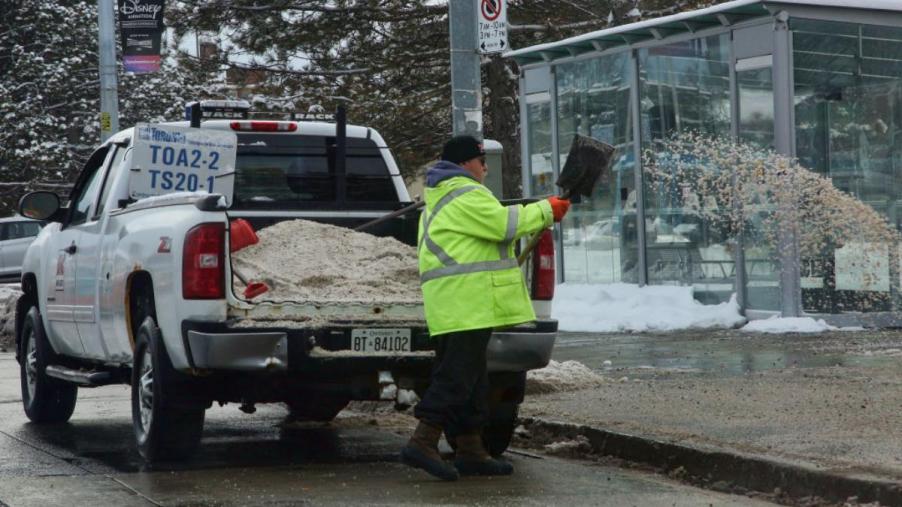
How Winter Road Salt Damages City Infrastructure and the Environment
Driving a car on snow and ice-packed roadways is challenging. To make driving safer, road crews apply road salt to reduce the effects of winter precipitation. Crews often apply road salt as a brine solution before and as rock salt during and after a winter storm. Road salt not only increases the need for vehicle maintenance, but it also damages infrastructure and the environment.
Why do road crews use salt to make winter driving safer?
In addition to using snow plows to clear heavy snow accumulations, trucks spread salt to melt any remaining ice. More recently, crews began pre-treating the roadways with a brine solution designed to discourage ice formation in the first place. But how does salt melt or prevent ice?
How Stuff Works says a 10-percent salt solution lowers water’s freezing point to 20 degrees Fahrenheit. Doubling the salt decreases the freezing point to two degrees.
The tricky part is getting the frozen precipitation to mix with the solid road salt. That’s why crews mix salt with water to form the brine pretreatment to jumpstart the chemical reaction before the winter storm arrives.
What are the downsides of using road salt to melt ice from the roadways?
Rust and corrosion occur through a chemical reaction called oxidation. Salt mixed with water accelerates that process. If there were a way to use road salt to melt the ice and then sweep it up for recycling, it wouldn’t cause any problems.
However, as the ice melts, so does the salt, and then the solution seeps into sidewalks, railroad crossings, roadways, and bridge joints, where it eats away at any metal surface and degrades concrete. Bridgestone says road salt causes an estimated $7 billion in damages annually to U.S. automobiles and infrastructure. If that’s not bad enough, road salt damages the environment beyond its application site.
Vox says excess salt washes into nearby streams, eventually entering lakes and local drinking water supplies. Freshwater aquatic life, such as invertebrates, amphibians, and fish, can’t survive in saltwater environments, plus it’s killing roadside plant life. That plant life reduces roadside erosion; without it, maintaining the roadway will cost even more.
Finally, the salt accumulated along roadside edges attracts wildlife drawn to the mineral deposits. While smaller animals cause very little damage when they meet a car on the road, accidents involving larger animals like deer and moose result in human fatalities.
What are some alternatives to road salt?
The EPA says the most common and least expensive form of road salt is sodium chloride, NaCl, also known as rock salt. Cost and volume are the biggest hurdles for finding an alternative to NaCl. For example, magnesium chloride (MgCl) and calcium chloride (CaCl) are safer alternatives but require heavier application rates than NaCl, increasing the cost.
Longer-term solutions like porous pavement and solar roads are on the horizon. Porous pavement prevents water from accumulating on the road surface. In comparison, solar roads promise to provide a renewable energy source while providing power to keep themselves ice-free.
Even with the issues surrounding salting roadways, increased demand continues to cause supply shortages. Perhaps the compounding negatives will reinforce the need to find alternative solutions sooner rather than later.



